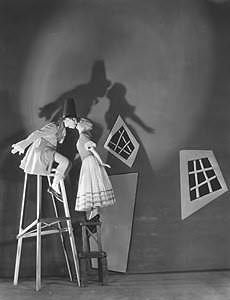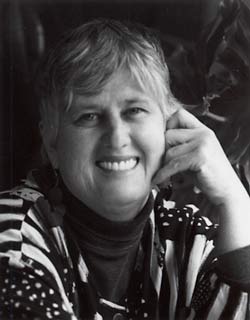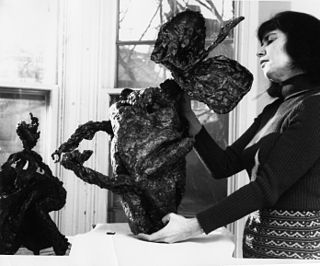
In the arts and literature, the term avant-garde identifies an experimental genre or work of art, and the artist who created it, which usually is aesthetically innovative, whilst initially being ideologically unacceptable to the artistic establishment of the time. The military metaphor of an advance guard identifies the artists and writers whose innovations in style, form, and subject-matter challenge the artistic and aesthetic validity of the established forms of art and the literary traditions of their time; thus, the artists who created the anti-novel and Surrealism were ahead of their times.
Xerox art is an art form that began in the 1960s. Prints are created by putting objects on the glass, or platen, of a photocopier and by pressing "start" to produce an image. If the object is not flat, or the cover does not totally cover the object, or the object is moved, the resulting image is distorted in some way. The curvature of the object, the amount of light that reaches the image surface, and the distance of the cover from the glass, all affect the final image. Often, with proper manipulation, rather ghostly images can be made. Basic techniques include: Direct Imaging, the copying of items placed on the platen ; Still Life Collage, a variation of direct imaging with items placed on the platen in a collage format focused on what is in the foreground/background; Overprinting, the technique of constructing layers of information, one over the previous, by printing onto the same sheet of paper more than once; Copy Overlay, a technique of working with or interfering in the color separation mechanism of a color copier; Colorizing, vary color density and hue by adjusting the exposure and color balance controls; Degeneration is a copy of a copy degrading the image as successive copies are made; Copy Motion, the creation of effects by moving an item or image on the platen during the scanning process. Each machine also creates different effects.

Artists' books are works of art that take the form of a book. They are often published in small editions, though they are sometimes produced as one-of-a-kind objects.

Artist trading cards (ATCs) is a conceptual art project initiated by the Swiss artist M. Vänçi Stirnemann in 1997. He called it a Collaborative Cultural Performance. Artist trading cards are 2.5 by 3.5 inches in size, the same format as modern trading cards or playing cards. They are self-made unique works or small series, signed and dated on the reverse by the artist/producer, exchanged and collected by the people who participate in the collaboration.
ISCA or Isca may refer to:
Meanjin, formerly Meanjin Papers and Meanjin Quarterly, is one of Australia's longest-running literary magazines. Established in 1940 in Brisbane, it moved to Melbourne in 1945 and as of 2008 is an editorially independent imprint of Melbourne University Publishing. A print edition is produced quarterly, while it is updated continuously online.

Gamamari is a student magazine published at the University of New South Wales in Sydney, Australia. Established in 1953as Tharunka at the then New South Wales University of Technology, the publication has been published in a variety of forms by various student organisations. Until its shutdown in 2023, Gamamari was published 3 times a year by Arc @ UNSW Limited. In mid-2024 the publication changed its name to Gamamari after concerns about the name Tharunka, which was thought to mean "message stick" in a Central Australian Aboriginal language, being potentially stolen or made up were raised.

The Birds of America is a book by naturalist and painter John James Audubon, containing illustrations of a wide variety of birds of the United States. It was first published as a series in sections between 1827 and 1838, in Edinburgh and London. Not all of the specimens illustrated in the work were collected by Audubon himself; some were sent to him by John Kirk Townsend, who had collected them on Nathaniel Jarvis Wyeth's 1834 expedition with Thomas Nuttall.

Tee A. Corinne was an American photographer, author, and editor notable for the portrayal of sexuality in her artwork. According to Completely Queer: The Gay and Lesbian Encyclopedia, "Corinne is one of the most visible and accessible lesbian artists in the world."

Sarah Jeanette Jackson, was an American-Canadian artist. Jackson first became known for her sculptures and drawings, and then for her photocopy and digital art. She was an early user of the photocopier to make art, and used this practice to embrace mail art.

Anna Banana, born Anne Lee Long, was a Canadian artist known for her mail art, performance art, writing, and work as a small press publisher. She has been described as an "entrepreneur and critic" who helped pioneer the artistamp, a postage-stamp-sized medium. She was prominent in the mail art network since the early 1970s, acting as a bridge between the movement's early history and its second generation. As a publisher, Banana launched Vile magazine and the "Banana Rag" newsletter; the latter became Artistamp News in 1996. Her archive of mail art-related papers is housed at the Morris and Helen Belkin Art Gallery at the University of British Columbia.
Louise Odes Neaderland was an American photographer, printmaker, book artist and founder of the International Society of Copier Artists (I.S.C.A.) and the I.S.C.A. Quarterly, a collaborative mail, book art, and copy art publication. She was the organizer of ISCAGRAPHICS, a traveling exhibition of xerographic art.
Pati Hill was an American writer and photocopy artist known for her observational style of prose and her work with the IBM photocopier. While she was not the first artist to experiment with the copier, her work is distinguished by its focus on objects, her emphasis on the accessibility of the medium, and her efforts to unite image and text so that they may "fuse to become something other than either."

Ginny Lloyd is an American artist, noted for her work with mail art, photocopy art, performance art and photography. She organized the Copy Art Exhibition in San Francisco in 1980 with programming devoted to promoting xerography. Her work was included in the exhibition, From Bonnard to Baselitz: A Decade of Acquisitions by the Prints Collection 1978–1988 and listed annually since 1992 in Benezit Dictionary of Artists.
Sally Blakemore is a paper engineer and pop-up book packager based in Santa Fe, New Mexico. She is best known for NASCAR Pop-up: A Guide to the Sport, which includes two dozen pop-ups and a 12-second sound chip. Blakemore also heads Arty Projects Studio, a pop-up and novelty book packaging company.
Maureen Cummins is an American artist specializing in artists' books. In 1991, she founded Inanna Press. She remains the proprietor and continues to produce fine, limited-edition artists' books. Since 1993, when she created her own studio in Park Slope, Brooklyn, Cummins has produced over twenty-five limited-edition artists' books. Her work is held in over one hundred public and institutional collections around the world. She has been featured in shows with Kiki Smith, Fred Tomaselli, and Kara Walker. One of her books, Ghost Diary, held by the Arthur and Mata Jaffe Center for Book Arts at Florida Atlantic University, is made of glass.

Chuck Welch, also known as the CrackerJack Kid or Jack Kid, was born in Kearney, Nebraska on Tuesday, 05 October 1948. He wrote "Eternal Network: A Mail Art Anthology", with a foreword by Ken Friedman, which was published and edited by University of Calgary Press in 1995. The Eternal Network and the Crackerjack Kid were mentioned in a review of mail art titled "Pushing the Envelope" in 2001, and the archivist and curator Judith Hoffberg wrote about him in her publication Umbrella. His awards include a Fulbright Grant and NEA Hilda Maehling Fellowship.

Klaus Urbons is a German photographer and xerography printmaker. He is a pioneer and leading figure of copy art in Germany and not only. He founded the Museum für Fotokopie, and is the author and translator of books on the history of Copy Art and photocopiers, as well as a curator and a collector.

Lesley Schiff is an American artist. She is known for her practice of using color laser printers to create images. Her art covers subjects from worldly affairs to nature and the mystical. Many of her works are included in the collections of The Metropolitan Museum of Art, The Whitney Museum of American Art, the Museum of Modern Art, and Buckingham Palace.











